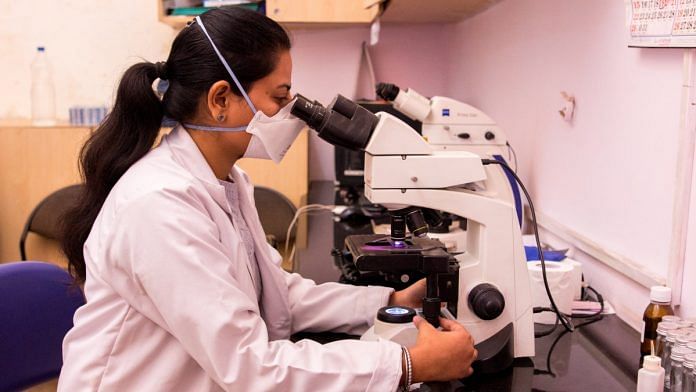
Thank you dear subscribers, we are overwhelmed with your response.
Your Turn is a unique section from ThePrint featuring points of view from its subscribers. If you are a subscriber, have a point of view, please send it to us. If not, do subscribe here: https://theprint.in/
India has long been known for its talent in the fields of science and technology. However, despite having a pool of talented researchers and engineers, the country is lagging behind in research and development. The situation is even more concerning when compared to other emerging economies like China, Brazil, and Russia.
According to the World Bank, India spends only 0.7% of its GDP on research and development, compared to the global average of 2.2%. This is a far cry from leading nations such as the United States, China, and South Korea which spend between 2.2% and 4.2% of their GDP on research and development. In 2019, China’s investment in research and development was five times higher than that of India, according to the Organisation for Economic Co-operation and Development (OECD).
India ranks 40th in the Global Innovation Index 2021, behind other emerging economies like China, Brazil, and Russia. This is a slight improvement from its 81st ranking in 2015, but there is still a long way to go to catch up with leading innovators. Moreover, the country’s global ranking in the Global Innovation Index 2021 is 46 out of 132 countries, down from 48 in 2020.
The number of research papers published by Indian scientists has increased from 62,441 in 2010 to 135,788 in 2019, according to data from the Scopus database. However, despite the increase in research output, India still lags behind other countries in terms of research impact. For example, India’s average citation per paper in 2019 was 7.9, compared to China’s 12.5 and the global average of 12.3, according to the Scopus database.
India has the third-largest scientific and technical manpower in the world, with over 2 million scientists and engineers. However, many of them lack adequate training and resources to conduct high-quality research. According to a 2020 report by the National Science and Technology Management Information System, India has around 167 researchers per million population, compared to 8,358 in South Korea, 4,831 in China, and 4,398 in the US.
The shortage of skilled researchers in India is not the only issue. The country also has a low number of patent applications filed, with only 33,471 in 2019-20, while the number of patent applications filed in China was 1.4 million, according to data from the World Intellectual Property Organization.
In order to catch up with other leading innovators, India needs to invest more in research and development. The Science, Technology, and Innovation Policy, 2020, recommends increasing India’s research and development expenditure to 2% of GDP by 2022, which would have required an increase of more than 2.5 times then current spending [Union Budget 2023-2034 has set aside Rs 2,000 crore (out of Rs 39,44,909 crore ) for National Research Foundation (NRF), an autonomous body under DST created to fund, coordinate, and promote research in the country]. This increase is crucial if India wants to achieve its goal of becoming a $5 trillion economy by 2024.
Moreover, the country needs to focus on quality over quantity when it comes to research output. The government should allocate funds to improve the quality of research and ensure that it has a greater impact. The government should also incentivize private players to invest in research and development, which would not only help them in their business operations but also benefit the country as a whole.
In conclusion, India has a lot of catching up to do in the field of research and development. The country’s current spending on research and development is inadequate and needs to be increased significantly. With the right investments, India can become a global leader in innovation and technology, but it needs to act quickly.
Sandip Godse
PhD Scholar
UTHSC, Memphis, TN, USA
These pieces are being published as they have been received – they have not been edited/fact-checked by ThePrint.

COMMENTS